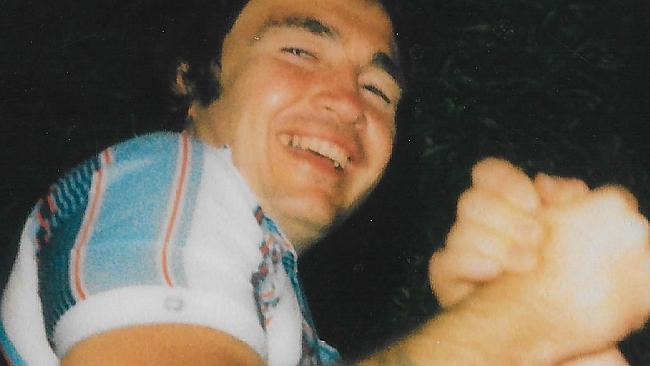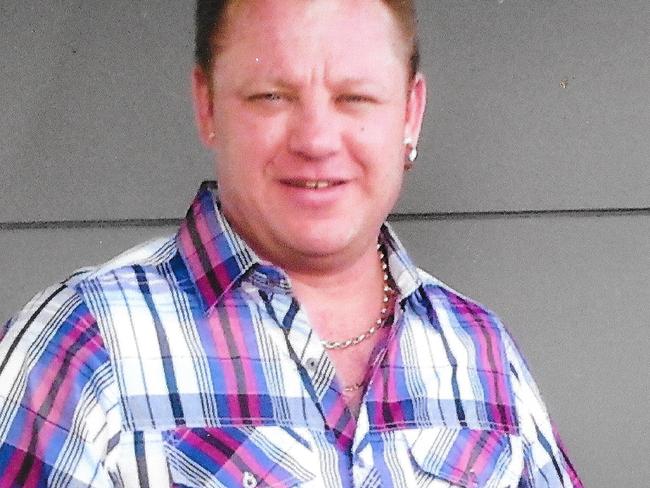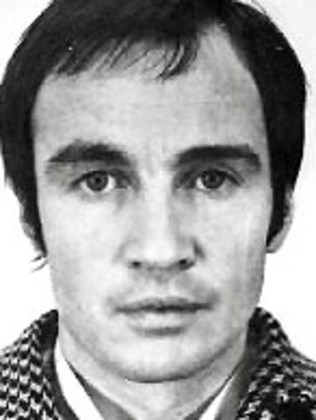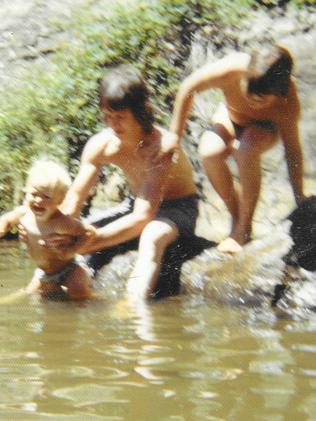Inside the Great Bookie Robbery
IT was the biggest armed robbery in Australian history, with gangsters grabbing $8.5 million. Now the mastermind’s son tells his story.

THE crew had been planning the heist for six months.
The bookies at Melbourne’s Victoria Club were settling their bets after the 1976 Easter long weekend and it was going to be the most lucrative haul in 130 years.
Larry walked up to reception, explaining he was there to fix the fridge, while four other gang members waited at the fire exit outside the second-floor settling room. As armoured guards unloaded their deliveries into the wire mesh clearing cage, Larry pulled out a World War II-era shotgun and locked the door as his associates burst in.
Ringleaders Ray “Chuck” Bennett and Norman Lee cut open the cage with boltcutters and stuffed $8.5 million in cash into canvas bags. Bookies, businessmen and club members watched in shock as Larry shoved his gun into a guard’s mouth and shouted: “If anybody moves or says a f***ing word, I’ll blow your f***ing head clean f***ing off.”
The gangsters ran back out of the fire escape, pulling off their balaclavas and overalls and jumping into two vans with fake numberplates where their getaway drivers were waiting. They sped off to the empty factory next to Lee Dim Sims on Brunswick Street, stashed the loot and celebrated with a beer.
It was the biggest armed robbery in Australian history and the breathtakingly audacious heist made headlines around the world. But the truth about what happened that day was mired in secrecy for years.

Ray and Norman were major players in Melbourne’s criminal underworld. The fallout from the legendary robbery reverberated through the city for years afterwards. Both were put under heavy police surveillance and eventually killed — mastermind Ray three years after the notorious crime, and Norman in 1992.
It took until Mark Lee Bennett was 29 for him to fully understand how he was mixed up in the murky business. As he threw himself into researching the fascinating history, his mother revealed he was Ray’s son from an affair and he learnt his father had put $6 million from the robbery in an account in his name in England. Mark, now a butcher, grew up with undercover police watching him in the playground.
He’s written a book to try to clear up the mystery that surrounds the heist, although plenty of people didn’t want him to write it.
“My father had brains,” he told news.com.au
“To get away with the biggest robbery in Australian history is a pretty good effort. The place was going to go off, it was just a matter of when.
“A lot of people were affected or involved in it. There’s been so many things written about this robbery ... half of them fabricated.
“I was only young. From what I heard over the years, my dad idolised me. He took me places, gave me money. I was only eight when he was shot dead. That’s when things started going a bit sideways for the family.


“A lot of people knew who I was, but I didn’t. It was a bit disappointing finding out so late in life. I’m just happy the story’s out.”
Already big-time gangsters with a string of armed robberies to their names, Norman and Ray branched out after the bookie robbery. They became involved in heists and drug trafficking in the US, Manila, China and Colombia, in part because police were watching the account in England so they couldn’t touch their stolen cash.
With the heat on and crime family the Kanes trying to point the finger at them, each of the crew had taken half a million dollars from the raid and Ray had flown the rest to the UK. But the gang had accidentally stumbled across “not just a jackpot but also a treasure trove of evidence that could put people away,” according to Mark.
The calico bags contained documents reverencing race fixing, blackmail and even murder, and naming corrupt lawyers and public officials and drug syndicates with contacts at Australia’s borders.
It was to change the nation. One of the biggest misconceptions about the robbery was how much was actually stolen. The 118 bookies whose money was taken claimed just $1.5 million had vanished, to cover up their “shifty deals”, writes Mark. The police and tax department were on to them.
“It could be argued that the robbery hastened the inevitable exposure of the greed and deceit practised by many bookmakers,” he said.
“They were rorting the system with undeclared cash and the tax department was investigating the bookmakers over their statements to the police while being interviewed over the armed robbery.”
In 1978, Ray and members of his crime syndicate gunned down Leslie Kane at his home after the family openly challenged him. Leslie’s wife claimed she could identify Ray, although he was masked, and he was arrested for the murder and a recent $70,000 weaving mill robbery.
As he was escorted into court in November 1979, a man in a blue suit stood up in the courtroom and shot him three times. Ray gave chase, shouting his police escort’s name “as an accusation”, says Mark, before collapsing and dying in hospital.
Norman continued in the business until July 1992, when he attempted a multi-million dollar heist at Melbourne Airport’s Ansett freight terminal, wearing a Michael Jackson mask with a partner in a Madonna mask. Police were on to them from the start, and as they tried to escape in a van, officers opened fire and shot Norman in the back of the head.
Mark believes the famous robbery changed Melbourne society for good. One thing’s for sure: no crime quite like this will ever take place again.
The Great Bookie Robbery by Mark Lee Bennett is on sale now.



